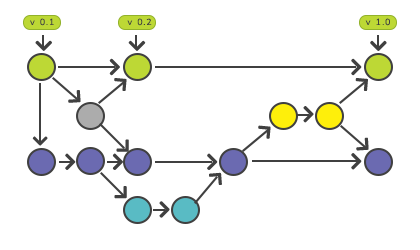
Definition
Source code management (SCM) is synonymous with Version control. It is a software tool that programmers use to manage source code. It tracks modifications to a source code repository and helps deal with merge conflicts.
Advantages of Source Code Management
SCM has a lot of useful features that can make your work even more effective and more manageable.
SCM is used for tracking the changes over time, thus creating a historical record, which can be used to find out where the bugs come from, compare the older versions and even undo some changes to the code base. Besides, it also archives these changes giving a cleaner look to the history log.
With the help of SCM, each developer works independently on a separate branch and once the work is done, all the branches are merged together.
Importance of Source Code Management
- Track Changes – Changes can be tracked as someone making a change leaves a commit message about it.
- Synchronization – The up-to-date codes can be fetched from the repository.
- Backup and Restore – Files are saved at any time and restored from the last saved one.
- Undoing – You can undo both the last known version and the last one created a long time ago.
- Branching and Merging – Changes are made on a branch and after being approved, they can be merged with the master branch.
- Identifying Conflicts and Preventing Overwrites – Overwrites are prevented and in case of conflicts, they are identified. SCM notifies the developers so that they can review these conflicts and resolve them.
Best Practices
- Frequent commits - Commits are snapshots that capture the current state of a project. Frequent commits give many opportunities to go back and undo the work. The commits can be combined into just a single commit to make clear the log.
- Work from latest version - SCM enables having a local copy of the codebase. To avoid merging conflicts pull or fetch the latest code before updating.
- Detailed Notes - It is a nice practice to leave a descriptive commit log message which will convey the commit’s content. Log messages become a “must” in the course of the project’s development.
- Review - SCM provides a staging area which is used to collect edits before committing and review changes before creating a snapshot.
- Branches - This super powerful mechanism allows team members to work on a separate line of development. When branch development is complete it can be merged into the master line.
- Workflow - SCMs offer form methods of contribution. It is very important that the team establishes shared patterns of collaboration. SCM workflows set up processes for merging branches.
Practice Your Knowledge
Quiz Time: Test Your Skills!
Ready to challenge what you've learned? Dive into our interactive quizzes for a deeper understanding and a fun way to reinforce your knowledge.